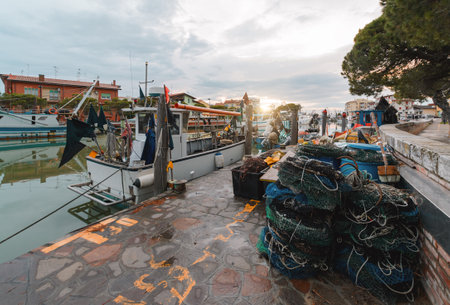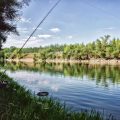Introduction to Fishing Regulations
Fishing is a beloved pastime across the United States, connecting people with nature and providing countless hours of relaxation and adventure. However, as a beginner, it’s important to recognize that fishing isn’t just about casting a line into the water—there are specific rules in place that every angler must follow. These fishing regulations exist for several reasons, primarily to ensure the long-term health of fish populations and aquatic environments. By understanding and following these regulations, recreational anglers help maintain a balance between enjoying their hobby and preserving natural resources for future generations. The impact of these rules goes beyond individual catches; they play a crucial role in conservation efforts, local economies, and the overall enjoyment of America’s rich fishing opportunities.
2. Licenses and Permits Required
If you’re new to fishing in the United States, understanding the different types of fishing licenses and permits is essential. Each state has its own set of rules, so it’s important to get familiar with your local requirements before you cast a line. Here’s a practical breakdown for beginners:
Types of Fishing Licenses
| License Type | Description |
|---|---|
| Resident License | For people who live in the state where they’ll be fishing. |
| Non-Resident License | Required for visitors or those living out-of-state. |
| Short-Term Permit | Good for a limited period (such as one day or one week). |
| Youth/Junior License | Discounted options for children and teenagers, often under 16 or 18 years old. |
| Senior License | Reduced rates for seniors, age varies by state. |
Where to Obtain Licenses
- State Fish and Wildlife Agencies: Most states offer online purchasing through official websites.
- Sporting Goods Stores: Big retailers like Walmart and Bass Pro Shops can issue fishing licenses on-site.
- Bait and Tackle Shops: Many local shops provide licensing services, especially in popular fishing areas.
State-Specific Rules Matter
Laws can vary significantly from state to state. For example, some states require separate permits for saltwater versus freshwater fishing. Others might have special requirements for certain species or specific bodies of water. Always check your state’s official Fish and Game website before heading out. Ignorance of the law is not an excuse—fishing without the correct license can result in hefty fines.
Pro Tip for Beginners
If you’re just starting out, ask local anglers or staff at tackle shops about beginner-friendly permits or “learn-to-fish” days, which some states offer free of charge to encourage newcomers. Getting the right license is not only about following the law—it also supports conservation efforts that keep America’s fisheries healthy for everyone.
![]()
3. Rules on Species and Limits
One of the most important aspects of responsible fishing in the United States is understanding the specific rules that govern which fish you can catch, how many you can keep, and the size of each fish allowed. These regulations are put in place to protect fish populations and maintain healthy ecosystems for future generations. Each state, and sometimes even specific bodies of water, may have different catch limits, meaning there’s a maximum number of certain species you’re allowed to harvest in a day. Ignoring these limits can harm local fish stocks and may result in hefty fines.
Besides daily limits, anglers must also be aware of protected or endangered species. Catching, keeping, or even targeting these species is illegal in many areas to help their numbers recover. Local agencies like state Departments of Fish and Wildlife provide lists of these protected species, so it’s crucial to study them before heading out. Additionally, size restrictions—minimum and sometimes maximum lengths—are enforced for many fish. These rules ensure that juvenile fish have a chance to mature and reproduce before being caught, while also protecting trophy-sized breeding adults.
If you’re just starting out, take time to read up on local regulations through official websites or printed guides available at sporting goods stores. When in doubt, ask a local ranger or experienced angler for advice. Following these rules not only keeps you on the right side of the law but also supports conservation efforts that benefit everyone who loves fishing.
4. Seasonal and Area Restrictions
For beginners, understanding the importance of seasonal and area restrictions is key to responsible fishing. In the United States, these regulations are designed to protect fish populations during critical periods such as spawning seasons or recovery times after overfishing. Open and closed seasons dictate when you can legally fish for certain species, and violating these rules can result in hefty fines or loss of fishing privileges.
Additionally, certain areas are designated as restricted or off-limits to safeguard sensitive habitats, threatened species, or local ecosystems. These can include wildlife refuges, breeding grounds, or sections of rivers and lakes that are under conservation efforts. Local guidelines often specify which bodies of water are accessible and what types of fishing methods are allowed in each area.
Common Types of Restrictions
| Type | Description | Example |
|---|---|---|
| Open/Closed Season | Times when fishing is permitted or prohibited for specific species | No bass fishing from April 1 – June 15 (spawning season) |
| Area Closures | Specific regions where fishing is not allowed | No fishing within 100 yards of a fish ladder |
| Gear Restrictions | Limits on bait, hooks, or tackle used in an area | Artificial lures only in designated trout streams |
How to Stay Compliant
- Check state wildlife agency websites for updated regulations before every trip.
- Download mobile apps offered by agencies like the U.S. Fish & Wildlife Service for real-time alerts.
- Pay attention to signage posted at access points—these often highlight special rules.
The Bottom Line
If you’re new to fishing, taking time to understand seasonal and area restrictions is not just about following the law—it’s about supporting conservation efforts that ensure fish populations remain healthy for everyone. Always double-check local guidelines so you know exactly when and where you can cast your line responsibly.
5. Catch and Release Best Practices
As a beginner angler in the U.S., understanding ethical fishing goes beyond following regulations—its about actively supporting conservation efforts. Practicing proper catch and release helps ensure fish populations remain healthy for future generations. Here are some simple, effective techniques to release fish safely and ethically.
Why Catch and Release Matters
Catch and release is more than just letting a fish go; its a critical tool for conservation. By returning certain species or undersized fish to the water, you help maintain balanced ecosystems and comply with local regulations. This practice also supports sustainable fisheries, ensuring there will always be fish to catch in the future.
Essential Techniques for Safe Release
- Use Barbless Hooks: Barbless hooks make unhooking easier and reduce injury to the fish.
- Minimize Handling: Wet your hands before touching the fish to protect its slime coating, which prevents infection.
- Keep Fish in Water: Whenever possible, unhook the fish while it’s still in the water. Limit air exposure to less than 30 seconds.
- Avoid Squeezing: Gently support the fish without squeezing, especially around the stomach or gills.
Quick Tips for Ethical Angling
- Have your tools (pliers, de-hookers) ready before landing a fish.
- If a fish is deeply hooked, cut the line close to the hook rather than trying to remove it forcibly.
- Revive tired fish by holding them upright in the water and moving them gently back and forth until they swim away on their own.
Remember: Responsible Fishing Supports Conservation
Your actions as an angler can make a real difference. By following these best practices for catch and release, you help sustain healthy fisheries and demonstrate respect for both wildlife and fellow anglers. Conservation starts with each cast—make yours count!
6. How to Stay Informed and Compliant
Staying up to date with fishing regulations is crucial for both legal compliance and supporting conservation efforts. Regulations can change frequently, especially in response to environmental factors or shifts in fish populations. As a beginner, it’s important to develop habits that help you avoid accidental violations and contribute positively to local fisheries.
Find Trusted Resources
Your state’s fish and wildlife agency is the best place to start. Their official website will have the latest rules, seasonal updates, and emergency changes. Many states also offer email newsletters or mobile apps with real-time alerts. Local bait shops and outdoor retailers are another valuable resource; staff there often have practical experience with current regulations in your area.
Join Community Groups
Online forums, Facebook groups, and local fishing clubs are great for sharing tips and news about regulation changes. Fellow anglers can provide firsthand information on what’s happening at specific lakes, rivers, or coastal areas. Just make sure you verify any advice against official sources before heading out.
Keep Documentation Handy
Always carry your fishing license and a copy of the current regulations when you go out—printed or saved on your phone. This not only protects you if checked by a game warden but also gives you a quick reference if you’re unsure about limits or protected species.
Stay Proactive
Make it a habit to check for updates before every trip. Regulations may change due to weather events, spawning seasons, or new scientific data. When in doubt, contact your state agency directly for clarification rather than risking an unintended violation. By staying informed, you’ll support sustainable fishing practices and help preserve waterways for future generations.


